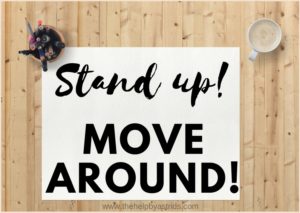 First of all, what is a Ketogenic Diet? A Ketogenic Diet or Keto Diet is a high fat, low carbohydrate, protein filled diet. It works on the premise that carbs are your main source of energy and by lowering your carb intake, your body taps into fat to use as fuel. This is done in a process called Ketosis.
First of all, what is a Ketogenic Diet? A Ketogenic Diet or Keto Diet is a high fat, low carbohydrate, protein filled diet. It works on the premise that carbs are your main source of energy and by lowering your carb intake, your body taps into fat to use as fuel. This is done in a process called Ketosis.
“Ketosis is a normal metabolic process. When the body does not have enough glucose for energy, it burns stored fats instead; this results in a build-up of acids called ketones within the body.
Some people encourage ketosis by following a diet called the ketogenic or low-carb diet. The aim of the diet is to try and burn unwanted fat by forcing the body to rely on fat for energy, rather than carbohydrates [1].”
Many office workers have tried tweaking their work routine or adapting productivity hacks in order to improve their performance at work. One area that they can look into is adapting a diet that can improve concentration and productivity.
The main claim to fame of the Ketogenic Diet, aside from being a weightloss tool, is its ability to improve productivity. This is apparently brought about by the production of Ketone bodies which help improve cognitive performance [2].
Notice how sluggish and sleepy you feel after a huge meal? Too much carbs sends us into a food coma and makes our brain go fuzzy. But in a high fat diet such as the Keto Diet, “Ketones provide the brain with another source of energy and allow it to more efficiently process the extra glutamate into GABA.
So, by helping increase the production of GABA, ketones can then help decrease the amount of extra neurons that are firing in the brain and improve mental focus. This might even help reduce the present of anxiety and stress, which is beneficial for anyone [3].”
How do I get started?
The Keto Diet is pretty straightforward, consume high fat, moderate protein, and low carb meals. Sounds simple enough but could be a challenge to adapt since most office workers grab meals on the go. And these meals tend to be high carb – rice boxes, pasta meals, deli sandwiches and subs, burgers and fries, and the occasional doughnut and brownie. These are the easiest, most convenient, and readily available options for office workers. But with a little background information on what you can eat and what to avoid, you can adapt the Keto Diet seamlessly.
So what exactly can you eat?
Here are some examples of what you can eat on the Keto Diet:
● Healthy fats (butter, olive oil, ghee, coconut oil)
● Meats (including organ meat, yes to steak!)
● Eggs (the go – to of all Keto enthusiasts)
● Fish and seafood (oilier fish is better and fresh is always preferred to canned)
● Non- starchy veggies (avoid potatoes, green leafy veg is the way to go)
● Tea, black coffee, and zero carb drinks (avoid fruit juices and no soda)
Hopefully, this guide can provide a starting point for making tweaks in our diet. Watching what we eat could potentially help us office workers in the quest towards a more productive workday. Stay humble and hustle hard!
Written by Jaie O. The Help
References:
1. https://www.medicalnewstoday.com/articles/180858.php
2. http://diabetes.diabetesjournals.org/content/58/5/1237.full
3. https://www.perfectketo.com/use-ketogenic-diet-productivity-mental-performance/
 I’ve written an
I’ve written an  Did you know that sitting for long periods of time is a risk factor for early death? But you already knew that, didn’t you? Not to scare you or anything, but new studies show that no matter how much you exercise, staying sedentary for too long can be a huge health risk [
Did you know that sitting for long periods of time is a risk factor for early death? But you already knew that, didn’t you? Not to scare you or anything, but new studies show that no matter how much you exercise, staying sedentary for too long can be a huge health risk [ If you have an independent or family run business, you probably have around two up to five people running it with you. And you might be comfortable with that. After all, these are the people you trust. But what happens when the business starts to grow, as any healthy business should?
If you have an independent or family run business, you probably have around two up to five people running it with you. And you might be comfortable with that. After all, these are the people you trust. But what happens when the business starts to grow, as any healthy business should? On a quest to adapt the most efficient productivity and time management tools, I came across a dozen examples. Some I’ve already written about in a
On a quest to adapt the most efficient productivity and time management tools, I came across a dozen examples. Some I’ve already written about in a